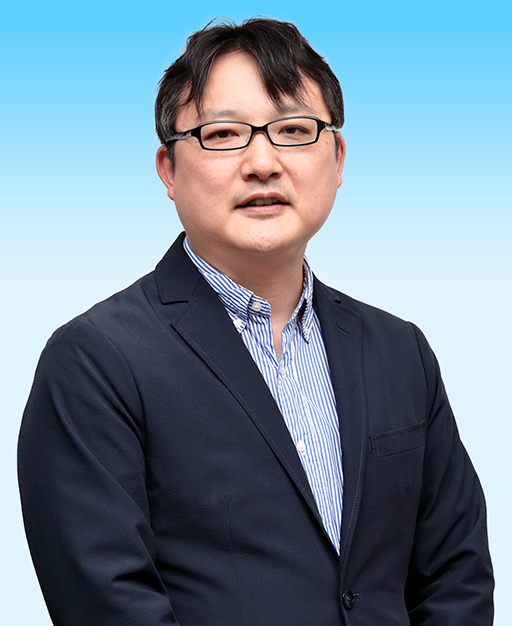TOP
 Research
Research
 Research Teams
Research Teams
 Computational Biophysics Research Team
Computational Biophysics Research Team
Computational Biophysics Research Team
Japanese
Team Principal Yuji SUGITA
 sugita[at]riken.jp (Lab location: Kobe)
sugita[at]riken.jp (Lab location: Kobe)- Please change [at] to @
- 2024
- Unit Leader, Life and Medical Science Application Interface Platform Development Unit, AI for Science Platform Division, R-CCS, RIKEN (-present)
- 2024
- Deputy Director, R-CCS, RIKEN (-present)
- 2012
- Chief Scientist, RIKEN Theoretical Molecular Science Laboratory (-present)
- 2011
- Team Leader, Laboratory of Biomolecular Function Simulation, RIKEN QBiC (-present)
- 2010
- Team Leader, Computational Biophysics Research Team, AICS (renamed R-CCS in 2018), RIKEN (-present)
- 2007
- Associate Chief Scientist, RIKEN Theoretical Biochemistry Laboratory
- 2002
- Lecturer, Institute of Molecular and Cellular Biosciences, The University of Tokyo
- 1998
- Research Associate, Institute for Molecular Science
- 1998
- Ph. D (Chemistry), Graduate School of Science, Kyoto University
Keyword
- Molecular Dynamics
- Protein Dynamics
- Free Energy Calculation
- Machine Learning
- Parallelization
Research summary
We perform molecular dynamics (MD) simulations to elucidate the structure, dynamics and function of biological macromolecules in various intracellular environments. Unlike dilute solutions, the cytoplasm is a crowded environment with huge number of proteins, nucleic acids and metabolites. Biological membranes also contain various lipid molecules, cholesterol and membrane proteins, and act as a platform for many biological phenomena. In order to understand biomolecular dynamics in such environments, we have developed multi-scale MD simulations using coarse-grained models, all-atom models, and QM/MM models We have developed GENESIS software for multi-scale MD simulations with enhanced sampling methods, free energy calculations, and data-driven molecular dynamics. Large-scale simulations are performed using the Fugaku supercomputer and other systems to study molecular dynamics in the intracellular environments.
Main research results
GENESIS 2.1 software for multi-scale molecular dynamics (MD) simulations combining coarse-grained models, all-atom models and QM/MM models. MD simulations of biomolecular systems are applied to a variety of targets, ranging from molecular-level calculations, such as predicting the dynamic structure of a single protein and its binding processes with substrates, to huge molecular systems containing many proteins, nucleic acids and metabolites in the intracellular environments. This requires extensive simulations over a wide range of spatio-temporal scales. As a single molecular model alone cannot effectively explore such a wide spatio-temporal scale, the QM/MM model is used for enzyme reactions to accurately predict the electronic state of the active site, while molecular dynamics using a coarse-grained model is used for large-scale systems such as cytoplasm and chromatin. For intermediate scales, all-atom molecular dynamics simulations are often employed. The development of the molecular dynamics software GENESIS has a long history, starting in 2009, and in the new version (2.1), multi-scale MD simulations combining coarse-grained, all-atom and QM/MM models are realised. MD simulations using each model is highly parallelised and can be used efficiently on supercomputers such as Fugaku. All-atom MD simulations can also be calculated using GPGPU. By combining these MD calculations with various free energy calculation methods, a variety of applied research is now possible for drug discovery, diseases and healths, and basic life sciences.
Representative papers
-
Jung J., Tan C., and Sugita Y.:
"GENESIS CGDYN: large-scale coarse-grained MD simulation with dynamic load balancing for heterogeneous biomolecular systems"
Nature Comm. 15, 3370 (2024). -
Jung J., Yagi K., Tan C., Oshima H., Mori T., Yu I., Matsunaga Y., Kobayashi C., Ito S., Ugarte La Torre D., and Sugita Y.:
"GENESIS 2.1: High-Performance Molecular Dynamics Software for Enhanced Sampling and Free-Energy Calculations for Atomistic, Coarse-Grained, and QM/MM models"
J. Phys. Chem. B 128, 6028-6048 (2024). -
Ugarte La Torre D., Takada S., and Sugita, Y.;
"Extension of the iSoLF implicit-solvent coarse-grained model for multicomponent lipid bilayers"
J. Chem. Phys. 159, 075101 (2023). -
Jung J., Kobayashi C., and Sugita Y.:
"Acceleration of generalized replica exchange with solute tempering simulations of large biological systems on massively parallel supercomputer"
J. Comp. Chem, 44, 1740-1749 (2023). -
Mizutani A., Tan C., Sugita Y., and Takada S.:
"Micelle-like clusters in phase-separated Nanog condensates: A molecular simulation study"
PLoS Comp. Biol. 19, e1011321 (2023). -
Matsunaga Y., Kamiya M., Oshima H., Jung J., Ito S., and Sugita Y.:
"Use of multistate Bennett acceptance ratio method for free-energy calculations from enhanced sampling and free-energy perturbation"
Biophys. Rev.14, 1-10 (2022). -
Zhang Y., Kobayashi C., Cai X., Watanabe S., Tsutsumi A., Kikkawa M., Sugita Y., and Inaba K.:
"Multiple sub state structures of SERCA2b reveal conformational overlap at transition steps during the catalytic cycle"
Cell reports 41, 111760 (2022). -
Kobayashi C., Matsunaga Y., Jung J., and Sugita Y.:
"Structural and energetic analysis of metastable intermediate states in the E1P–E2P transition of Ca2+-ATPase"
Proc. Natl. Acad. Sci. USA, 118, e2105507118 (2021). -
Jung J., Kasahara K., Kobayashi C., Oshima H., Mori T., and Sugita Y.:
"Optimized Hydrogen Mass Repartitioning Scheme Combined with Accurate Temperature/Pressure Evaluations for Thermodynamic and Kinetic Properties of Biological Systems"
J. Chem. Theory Comput. 17, 5312-5321 (2021). -
Mori T., Jung J., Kobayashi C., Dokainish H.M, Re, Yuji Sugita
"Elucidation of Interactions Regulating Conformational Stability and Dynamics of SARS-CoV-2 S-Protein"
Biophys. J. 120, 1060-1071 (2021).
Annual Reports
Press Releases & Other News
- Glycans are crucial in COVID-19 infection
 (Mar 24, 2021, RIKEN Website)
(Mar 24, 2021, RIKEN Website)
